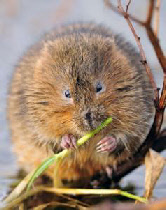

Make a point of visiting us weekly!
Organisations:
Essex Wildlife Trust
Essex Wildlife Trust


Chalara dieback of ash (Chalara fraxinea)
(6th November 2012)
Further to the recent news items in the national press and on television this article provides the latest information on the disease.
At present it is more likely that younger trees (those planted within the last 5 years) may be diagnosed with the disease through contaminated from nursery stock. Mature trees are less likely to be diagnosed especially those in urban areas where the risk at present is low. We will update this article as and when more information is available.
What is the threat to the ash population of the UK?
The Forestry Commission state that it is potentially a very serious threat. In Europe it has caused widespread damage and there is no reason to believe that the consequences of its entering the natural environment in Britain would be any less serious. Experience on the Continent indicates that it kills young ash trees very quickly, while older trees tend to resist it for some time until prolonged exposure causes them to succumb as well.
What are the symptoms of the disease?
See links for an identification .pdf and a very useful short film produced by the Forestry Commission:
http://www.forestry.gov.uk/pdf/Symptoms_guide_Chalara_dieback_of_ash_2012.pdf/$FILE/Symptoms_guide_Chalara_dieback_of_ash_2012.pdf
http://youtu.be/8sI7hgFZ-4g
How is it spread?
Local spread may be via rain splash or even transmission by insects. Over longer distances the risk of disease spread is most likely to be through the movement of diseased ash plants. Movement of logs or unsawn wood from infected trees might also be a pathway for the disease, although this is considered to be a low risk.
Recent advice is to ensure that leaf litter is not transported from site to site therefore it is essential to remove all leaves from boots and vehicle tyres before entering/leaving woodland.
The latest Government scientist’s understanding of the disease
(6th November 2012)
Further to the recent news items in the national press and on television this article provides the latest information on the disease.
At present it is more likely that younger trees (those planted within the last 5 years) may be diagnosed with the disease through contaminated from nursery stock. Mature trees are less likely to be diagnosed especially those in urban areas where the risk at present is low. We will update this article as and when more information is available.
What is the threat to the ash population of the UK?
The Forestry Commission state that it is potentially a very serious threat. In Europe it has caused widespread damage and there is no reason to believe that the consequences of its entering the natural environment in Britain would be any less serious. Experience on the Continent indicates that it kills young ash trees very quickly, while older trees tend to resist it for some time until prolonged exposure causes them to succumb as well.
What are the symptoms of the disease?
See links for an identification .pdf and a very useful short film produced by the Forestry Commission:
http://www.forestry.gov.uk/pdf/Symptoms_guide_Chalara_dieback_of_ash_2012.pdf/$FILE/Symptoms_guide_Chalara_dieback_of_ash_2012.pdf
http://youtu.be/8sI7hgFZ-
How is it spread?
Local spread may be via rain splash or even transmission by insects. Over longer distances the risk of disease spread is most likely to be through the movement of diseased ash plants. Movement of logs or unsawn wood from infected trees might also be a pathway for the disease, although this is considered to be a low risk.
Recent advice is to ensure that leaf litter is not transported from site to site therefore it is essential to remove all leaves from boots and vehicle tyres before entering/leaving woodland.
The latest Government scientist’s understanding of the disease
· the spores are unlikely to survive for more than a few days;
· spore dispersal on the wind is possible from mainland Europe;
· trees need a high dose of spores to become infected;
· the spores are produced from infected dead leaves during the months of June to September;
· there is a low probability of dispersal on clothing or animals and birds;
· the disease will attack any species of ash;
· the disease becomes obvious in trees within months rather than years;
· wood products would not spread the disease if treated properly;
· once infected, trees can’t be cured; and
· not all trees die of the infection, and some are likely to have genetic resistance.
· spore dispersal on the wind is possible from mainland Europe;
· trees need a high dose of spores to become infected;
· the spores are produced from infected dead leaves during the months of June to September;
· there is a low probability of dispersal on clothing or animals and birds;
· the disease will attack any species of ash;
· the disease becomes obvious in trees within months rather than years;
· wood products would not spread the disease if treated properly;
· once infected, trees can’t be cured; and
· not all trees die of the infection, and some are likely to have genetic resistance.
Reporting suspected cases
If the disease is suspected on any RDC managed tree or on any tree with a Tree Preservation Order please contact the woodlands team.
Otherwise please report suspected cases of the disease to one of the following:
Fera: 01904 465625;
planthealth.info@fera.gsi.gov.uk
Forestry Commission: 0131 314 6414;
plant.health@forestry.gsi.gov.uk
Fera: 01904 465625;
planthealth.info@fera.gsi.gov.uk
Forestry Commission: 0131 314 6414;
plant.health@forestry.gsi.gov.uk